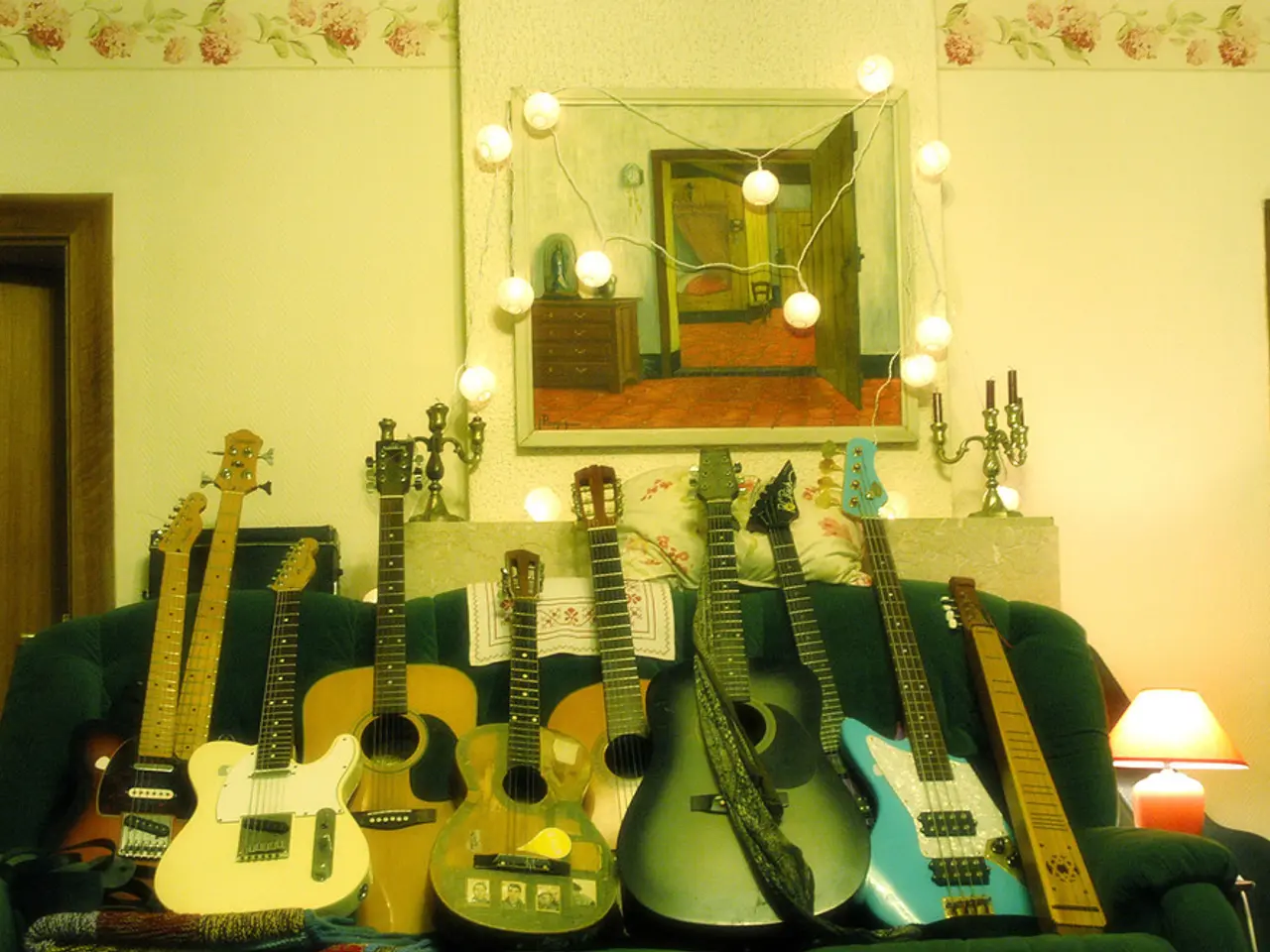Which Sized Professional Speakers are Ideal for Setting up a Personal Recording Studio?
When it comes to creating high-quality music in a home studio, understanding the intricacies of studio monitors is crucial. This guide will help you navigate the world of studio monitors, from choosing the right size for your room to selecting a brand that suits your production style.
The Importance of Acoustic Treatment and Room Size
Acoustic treatment is essential for achieving the best sound quality in a studio. Proper acoustic treatment minimizes unwanted reflections and absorbs problematic frequencies, allowing studio monitors to perform at their best. The size of your room plays a significant role in determining the appropriate monitor size.
In small rooms, smaller monitors with 3.5-inch to 6-inch drivers are recommended. These sizes prevent excessive sound pressure and ensure more accurate sound in confined spaces. On the other hand, medium rooms require monitors with 6-inch to 8-inch drivers to provide better bass response and fuller sound suitable for moderate-sized spaces. For larger rooms, larger monitors with drivers 8 inches and above are recommended to fill the space effectively and maintain clarity.
Choosing the Right Studio Monitors
Balancing budget and performance is essential when selecting studio monitors. Affordable options like the M-Audio BX5-D3 offer good sound clarity and are ideal for mixing tracks economically. For those who prioritize sound precision and durability, investing in high-end monitors from brands like Adam Audio and Focal is worth considering.
The production style of your music also plays a role in choosing the right studio monitors. For genres that emphasize low-end frequencies, like hip-hop or electronic music, look for monitors with larger woofers. For genres that require superb transient detail, like acoustic or classical music, choose monitors with a balanced frequency response.
Active vs Passive Monitors
Studio monitors come in active and passive varieties. Active monitors have built-in amplifiers, while passive monitors require an external amplifier. Active monitors often have features like bi-amp or tri-amp, which enhance audio performance by powering different parts of the speaker separately.
Placement of Studio Monitors
Proper speaker placement is crucial for achieving the best sound quality. Position monitors so they form an equilateral triangle with your listening position to ensure balanced sound imaging. The distance between you and the monitors also matters. Smaller monitors are ideal for short listening distances, while larger monitors with at least 7 or 8 inches are recommended for larger distances.
Popular Home Studio Monitors
Some popular home studio monitors include the Yamaha HS5 and KRK Rokit 5, both of which offer a balance of sound quality, affordability, and versatility.
In conclusion, understanding the relationship between studio monitor size, room size, and production style will help you make an informed decision when selecting studio monitors for your home studio. By considering these factors, you can create a more accurate and reliable mixing and monitoring environment.
The size of a room significantly affects the appropriate monitor size for a home studio; small rooms are better served with smaller monitors featuring drivers between 3.5-inch to 6-inch, whereas medium rooms require 6-inch to 8-inch drivers, and larger rooms need monitors with drivers 8 inches and above.
Choosing the right studio monitors necessitates a balance between budget and performance; while affordable options like the M-Audio BX5-D3 offer decent sound clarity, investing in high-end brands like Adam Audio and Focal provides additional sound precision and durability.
Another essential factor to consider is the music production style; for genres that emphasize low-end frequencies like hip-hop or electronic music, monitors with larger woofers are recommended, while genres requiring accuracy in transient details like acoustic or classical music should opt for monitors with a balanced frequency response.
Studio monitors are available as both active and passive types – active monitors include built-in amplifiers, whereas passive monitors require an additional external amplifier. Active monitors may feature bi-amp or tri-amp technologies, which improve audio performance by powering different parts of the speaker separately.




